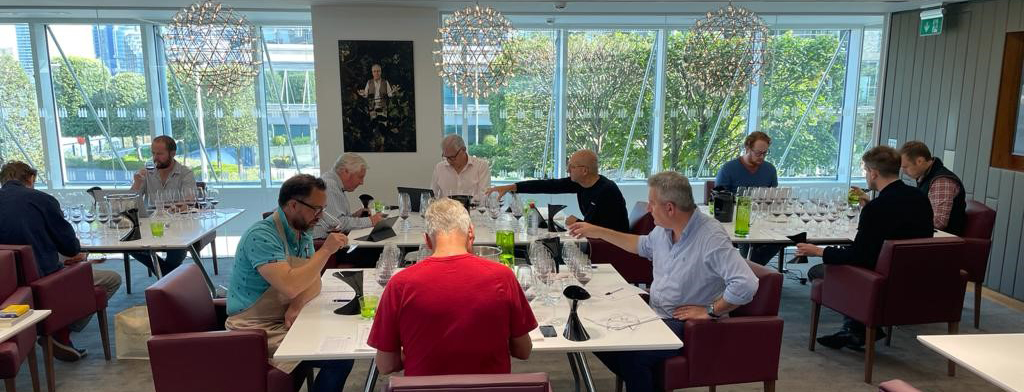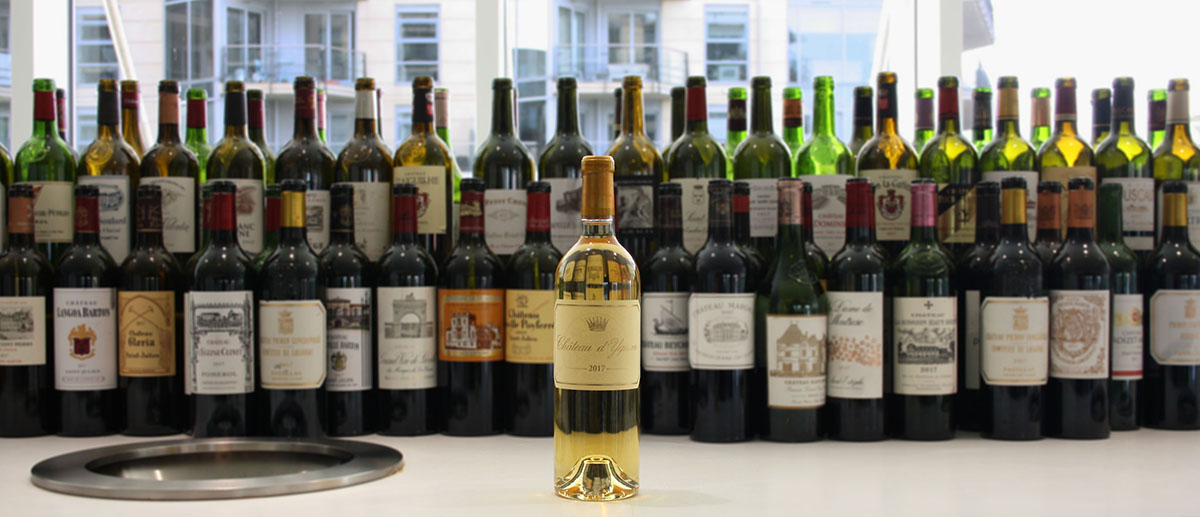The Southwold Group usually convenes in January; this year was obviously different and we were pleased to finally hold our tasting of the 2017 vintage this week. The panel included no less than six MWs, the buyers of the UK’s leading merchants and Neal Martin of Vinous.com. Our friend Steven Spurrier was much missed.
2017 has a tough few years to follow; 2016 is one of the all time greats, the best 2015s are ripe and plush; 2014 remains under-rated as a classic vintage for classic claret. As ever, all wines were tasted blind in peer group flights of 12.
The sheer number of St Emilions to taste can be overwhelming, but the pattern of less extraction and less jammy wines is continuing, and these are much easier to taste than they were 10 years ago. Angélus, Cheval Blanc and Canon all put in strong showings, along with Belair Monange, Ausone and Figeac. 2017 is not a great vintage in any appellation, though the wines on the right bank do have more fruit to them, and St Emilion is probably the strongest appellation of the vintage.
The wine of the appellation, and the group’s wine of the vintage, is Eglise Clinet; a wine of depth, spicy fruit and an undeniable pizzazz. Lafleur ran it very close and these are the standout wines of Pomerol in 2017. La Fleur Pétrus, Trotanoy and Petite Eglise all put in solid showings.
Haut Brion and La Mission Haut Brion are clearly out in front in 2017, followed by solid performances from Smith Haut Lafitte, Pape Clement and Domaine de Chevalier.
Invariably inconsistent, the Margaux flights can often be a struggle. Palmer and Château Margaux itself were the clear winners here, followed by an impressive showing from Brane Cantenac.
Léoville Poyferre was the clear winner here, with an impressive performance from Beychevelle. Ducru Beaucaillou and Léoville Barton were just behind. This appellation usually stands out for its consistency but there was a distinct lack of charm here in 2017.

This is the appellation that usually comes out on top, lead by the usual suspects. Mouton Rothschild was the group favourite here. Châteaux Latour, Lynch Bages and Pichon Lalande all ran it very close. Grand Puy Lacoste and Batailley also showed well.
This is an appellation that excels in the hotter years and is more challenging in tougher vintages. The big three of Montrose, Cos d’Estournel and Calon Ségur comfortably topped the group through none were as strong as we would have hoped.

This is where there is some real success in 2017. Smith Haut Lafitte, Haut Brion Blanc and La Mission Haut Brion Blanc topped the flight of dry whites, closely followed by Domaine de Chevalier Blanc and an impressive performance from Valandraud Blanc
The sweet whites were even stronger: a deep, rich and positively energetic Yquem topped the flight – this really is a great Yquem, followed by de Fargues and what has to be the bargain sweet white of 2017: Doisy Vedrines.
After more than 230 wines, the summary of 2017 as a vintage is rather disappointing. Whilst comfortably better than 2013, it sits under the fleshy 2015s and the still under-rated 2014s. The closest vintage in terms of overall quality for the reds is 2011. The wines may well show better in time, and the very best wines of the vintage are not to be overlooked.
2013 is clearly the weakest vintage in the last ten years and 2017 is certainly better. However, the group struggled to rate 2017 any higher than 9th of the last 10 vintages that we have blind-tasted.
Our ranking would be as follows:
We will be re-assembling to taste the 2011 vintage “Ten Years On” next month. When we tasted them in their youth they were tannic and lean with the fruit rather overwhelmed by structure. We’re hoping that they will have softened and are now showing better and are ready to drink.
Whilst 2017 is by no means a great vintage, it’s a perfectly decent one. We would rate it as being better than 2013 and also, potentially, slightly above 2007, 2004 and 2002. Many producers can be proud of what they have achieved in a challenging year. If fairly priced, it could have been a successful en primeur campaign. But it wasn’t. Unfortunately the biggest problem with 2017 is the prices at which the wines were released en primeur (which is so often the case when an average vintage follows a great one). The châteaux should have ignored the prices of the clearly stronger 2015 and 2016 vintages and released these wines at the same prices as 2014. Sadly, many of them came out around 30% higher and this has resulted in a stagnant (at best!) market and most 2017s will take a long time to be worth more than consumers paid on release. But, bargain parcels at discounted prices do appear now and again on the Bordeaux market - which might make the best-rated wines an interesting proposition.